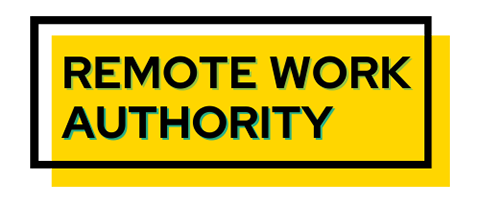Despite employer concerns during the pandemic, when many employees worked from home, productivity did not suffer. Many self-reported they were more productive, and their bosses agreed. For self-motivated workers, where they work is not the key variable in productivity.
Remote work became so popular during the pandemic that many employees were reluctant to return to the 9-to-5 grind of an office. Many top companies agreed to let some workers do their jobs away from the office all or most of the time in a hybrid work arrangement. Though employers did not find a drop in productivity, many want their workforce back on their promises to do their jobs.
This article explores remote work productivity and provides practical tips and insights for remote workers looking to enhance their productivity and achieve their goals. Whether you are a seasoned remote worker or new to this work arrangement, this article will provide valuable guidance for optimizing your productivity and achieving success in your remote work career.
Table of Contents
What Are The Benefits Of Remote Work?
Remote work has become increasingly popular recently, with many companies and organizations adopting flexible work arrangements. While remote work offers many benefits, like increased work-life balance and reduced commuting time, it also presents unique challenges for productivity.
“Work-life” balance is the buzzword that sums up why remote work became popular during the pandemic and remains so. Without a commute and the need to do the other non-productive aspects involved in holding an outside job, workers can give equal priority to their work and home life. Remote work productivity is high, while workers can devote more time to their personal life.

Employers were skeptical that employees working independently could deliver acceptable metrics without being in close proximity to a supervisor. Statistics verified that companies are happy with remote work performance. However, making the concept work requires that employees make good choices so that employers with how they spend their time.
Without the structure and accountability of a physical office, remote workers may struggle to stay focused and motivated. Distractions from home, such as family members, pets, and household chores, also interfere with productivity.
To combat these challenges, remote workers must develop effective strategies for managing their time and maintaining focus. These strategies may include setting clear goals, creating a designated workspace, and using time-management techniques such as the Pomodoro method.
2022 State Of Remote Work Report By Owl Labs
The 2022 State of Remote Work report by Owl Labs surveyed over 2,000 workers across different industries and company sizes to understand the current trends and challenges of remote work. The report found that remote work continues to be a popular work arrangement, with 80% of respondents reporting they work remotely at least once a week.
According to the survey, one of the main benefits of remote work is improved work-life balance, with 76% saying it has improved their overall well-being. However, the report also highlights that remote work creates challenges for communication and collaboration, with 50% of respondents citing communication as their top challenge.
The report also explores the impact of remote work on productivity and finds that remote workers are generally more productive than in-office workers. However, the study notes that remote workers face unique distractions, such as household chores and family members, which negatively impact their productivity.
Overall, the report provides valuable insights into the current state of remote work and highlights the need for companies to provide adequate resources and support to remote workers to ensure their success and well-being.
Did Remote Work Reduce Productivity?
There is no definitive answer to whether remote work reduces productivity as it depends on various factors such as the nature of the work, the type of industry, and the individual’s work habits. However, several studies have shown remote workers are just as productive or even more productive than their in-office counterparts.
For instance, a study by Stanford University discovered remote workers had a 13% increase in productivity compared to their in-office peers. Additionally, a survey by Airtasker showed that remote workers worked an average of 1.4 more days per month than in-office workers, resulting in an additional 16.8 days per year.
What is clear from recent studies is that workers value the flexibility of remote work, whether they do it from home, from their vacation home in another state, or abroad as digital nomads. In a study conducted by the New York Times, employees who worked remotely reported higher job satisfaction and were less likely to quit their jobs. Companies improve retention by providing career development opportunities and flexible work arrangements.

Does Remote Working Improve Productivity?
Remote working can improve productivity for several reasons.
- Working remotely eliminates the need for a daily commute, saving time and reducing stress.
- It allows for greater flexibility in managing work hours, increasing job satisfaction and motivation.
- Remote workers avoid the distractions and interruptions of a noisy office environment, allowing them to concentrate better on their work.
- Remote work fosters a better work-life balance, improving mental health and well-being. Parents who are stressed when their kids or sick, have baseball practice or are in a play can take the time they need to attend to their personal business and put in the time later.
- Workers can be more efficient with their time by structuring their workday around their most productive hours.
- Remote work expands the talent pool for companies and job opportunities for applicants alike, as location is not a constraint.
How Do Remote Workers Motivate Themselves?
Remote workers motivate themselves by establishing a clear set of goals and deadlines. They then break those goals down into smaller manageable tasks and prioritize them accordingly. While some employers require workers to log in to tracking software to monitor productivity, many remote workers know if they are productive by setting clear performance metrics and goals that align with their job responsibilities.
Remote workers set up home offices or find some co-working space that is free of distractions and comfortable to work in with proper desks, chairs, and laptops. Forbes recommends investing in ergonomic furniture and setting clear boundaries between work and personal time. It’s also important to minimize distractions like social media and non-work-related websites to maintain focus during work hours.
Creating a structured daily routine with dedicated work hours and breaks also helps remote workers stay motivated and focused. This routine may involve setting daily, weekly, or monthly plans, scheduling regular breaks, and utilizing time-management techniques.

Remote workers don’t have to go it alone. While self-assessment is necessary, seeking feedback and recognition from peers, supervisors, or clients also motivates remote workers. They may even join online communities or accountability groups that provide a support system and help remote workers stay on track.
Finally, engaging in activities that promote physical and mental well-being, such as exercise, meditation, or hobbies, helps remote workers maintain motivation and productivity levels.
By adopting these strategies, remote workers effectively manage their productivity and achieve their goals.
What Is The Best Way To Track Remote Work Productivity?
The best way to track remote work productivity depends on the nature of the work and the organization’s goals. Some commonly used methods include time-tracking software, project management tools, and regular check-ins with managers.
Time-tracking software such as Toggl or Harvest provides a detailed breakdown of the time spent on specific tasks, which helps remote workers manage their time effectively. Project management tools like Asana or Trello offer a collaborative platform for teams to manage tasks and deadlines.
Additionally, utilizing productivity analytics tools like RescueTime or DeskTime provides insights into how remote workers spend their time and identifies areas for improvement. Organizations track remote work productivity and optimize performance by combining these methods.
In conclusion, the future of work is evolving, and remote work is becoming an increasingly popular option. Companies must prioritize employee wellness, effective communication, and a supportive work environment to ensure productivity while working in remote environments. By implementing these strategies, companies optimize productivity and improve retention in remote teams.


